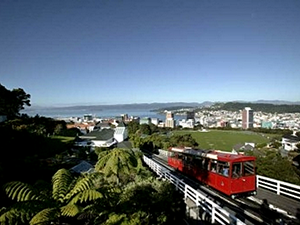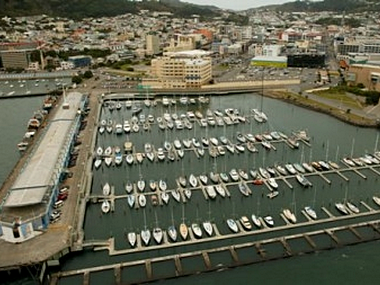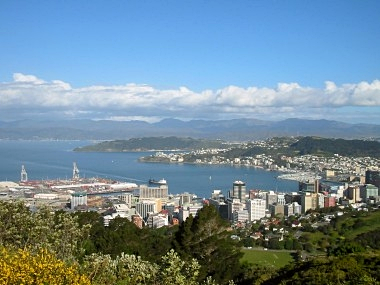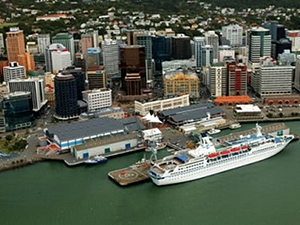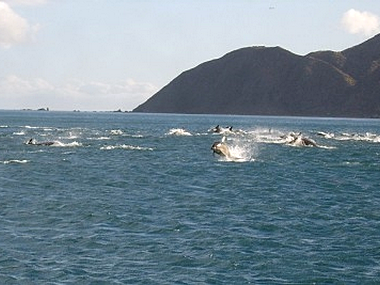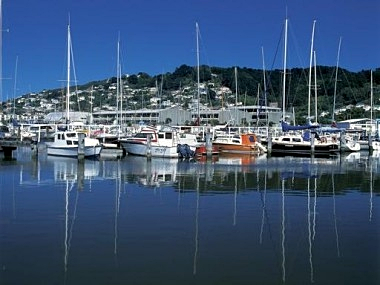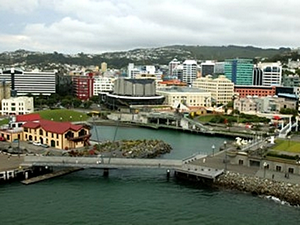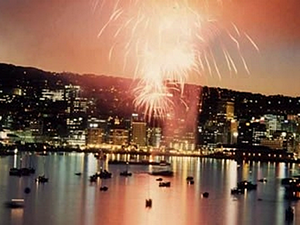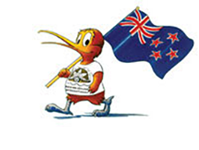The capital city of New Zealand
Located on a beautiful harbour, our city is young and vibrant. Wellington has been extensively modernised over the last 30 years. It is a very compact city being contained in growth by the surrounding hills and green belt reserves.
Climate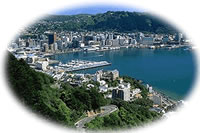
Warm to bracing
Average 23° in the summer and 8° in the winter.
Best months to visit February - April, October - November
About Wellington
Wellington as the Capital City, is the geographical centre of New Zealand and is the focus of the country's financial and political power. Wellington at 41В° 30'S Latitude is the southernmost capital city in the world and is only a Ferry ride (3 hours) to the wonderful scenic South Island
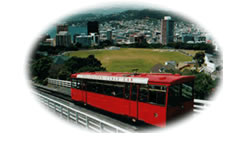 Wellington became the capital in 1865 and by 1870 the population was growing at a brisk pace and began to assume that cosmopolitan air that has characterised it ever since. Whilst construction has changed the skyline with modern buildings, Wellington has retained many of its historic sites and buildings. Many fine wooden structures built out of the very durable native timbers still remain. Amongst the historic buildings preserved are Antrim House, the Colonial Cottage Museum, Old St Paul's Cathedral, Katherine Mansfield birthplace home, Parliament Buildings including the "Beehive", the old Government Buildings now a faculty of Victoria University and many fine city villas which are precariously clinging to the hillsides.
Wellington became the capital in 1865 and by 1870 the population was growing at a brisk pace and began to assume that cosmopolitan air that has characterised it ever since. Whilst construction has changed the skyline with modern buildings, Wellington has retained many of its historic sites and buildings. Many fine wooden structures built out of the very durable native timbers still remain. Amongst the historic buildings preserved are Antrim House, the Colonial Cottage Museum, Old St Paul's Cathedral, Katherine Mansfield birthplace home, Parliament Buildings including the "Beehive", the old Government Buildings now a faculty of Victoria University and many fine city villas which are precariously clinging to the hillsides.
Downtown Lambton Quay with its "established" shops is popular with shoppers. The newer shopping centres, following overseas trends, show the modern New Zealand way of city life. You'll enjoy the Cable Car, Botanical Gardens and the superb harbour views, which vary as they are seen from around the area.
Wellington has long been recognised as the cultural and arts capital of New Zealand. It is home to the New Zealand Symphony Orchestra, the Royal New Zealand Ballet, Opera Companies, theatre and a large number of art galleries, including the National Museum Te Papa Tongarewa (Our Place) - locally known as Te Papa. The cosmopolitan nature of Wellington is reflected in over 350 restaurants and cafes serving innovative New Zealand and ethnic cuisine from around the world.
About Porirua
Porirua City is located 20 minutes North of Wellington. The residents of Porirua are from many different countries including many of the Pacific Islands. Porirua City is a Sister City with Blacktown, Australia. The population grew rapidly in the 1960s and early 1970s and is now approximately 50,000. Situated around a harbour, with one arm of the harbour, the Pauatahanui inlet is known for the conservation of its wildlife and wetlands.
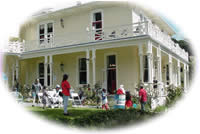 Porirua was named by the great Polynesian explorer, Kupe, the first human to see Porirua Harbour. He named it after "two flowings of the tide". There is a lot of Maori as well as European History in the area.
Porirua was named by the great Polynesian explorer, Kupe, the first human to see Porirua Harbour. He named it after "two flowings of the tide". There is a lot of Maori as well as European History in the area.
Cultural activities, shopping, history, beaches, views and great walkways combine to make "Porirua Plus" the promotional slogan currently in use.
Mana Island and Kapiti islands offshore from Porirua, are under Dept of Conservation control and are limited to 50 visitors a day.
Pataka Museum is a contemporary museum and art gallery containing a treasure house of cultural expression. It displays works from leading contemporary NZ, Maori and Pacific Island artists. Pataka incorporates The Whitirea Performing Arts School, Melody Farm Music Museum, Porirua Library, Japanese Gardens and a Café.
About Hutt City
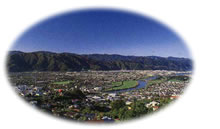
Hutt City is the 9th largest city in NZ and is 10 km from the centre of Wellington city. It is the location of the landing of the first organised migration to New Zealand in 1840 It comprises a combination of hills and valleys, the Hutt River and the sea. It is famed for its parks and gardens, while the river is popular for fishing. There are a number of heritage buildings and sites, as well as foreshore walks and safe swimming.
The Surrounding Regions
New Zealand lies astride the southern "roaring forties" weather zone. By nature of the two main mountainous islands forming New Zealand and the Cook Strait waterway division between the North and South Islands, Wellington attracts plenty of fresh clean air with "gentle" breezes. Envious cities, which have smog and humidity problems, refer to us as the "windy city". Locals prefer the clean, fresh and invigorating image.
For a different perspective of the city, take a harbour cruise or a ferry trip to Eastbourne, where there are craft shops, galleries and cafes. The harbour is home to a strong yachting fraternity, which enjoys all year-round activities. The Hutt and Porirua Cities have fine specialist Art Galleries and Museums.
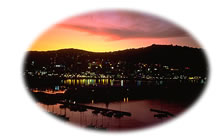 A forty-five-minute drive north of Wellington City is the Kapiti Coast, which includes the urban areas of Raumati, Paraparaumu and Waikanae. The main attractions on the coast are the world-class Southward Car Museum and the Lindale Agricultural Centre - both with very nice cafes. The QE II Park at Paekakariki with the 2nd World War memorial to the US Marines is worthy of a stop when passing.
A forty-five-minute drive north of Wellington City is the Kapiti Coast, which includes the urban areas of Raumati, Paraparaumu and Waikanae. The main attractions on the coast are the world-class Southward Car Museum and the Lindale Agricultural Centre - both with very nice cafes. The QE II Park at Paekakariki with the 2nd World War memorial to the US Marines is worthy of a stop when passing.
A one-hour drive northeast of Wellington lies the wine-growing region of the Wairarapa. The region consists of more than 20 wineries. Small towns each with their own special characteristics make welcome stops for visitors.
The Wellington Friendship Force, (wellingtonfriendshipforce.co.nz) was formed in March 1985, has 35 members and represents the greater Wellington region. The region includes the four independent cities of Wellington City, Hutt City (formerly and still locally known as Lower Hutt), Upper Hutt City and Porirua City. The total population of the region is 419 000 made up of Wellington City 216,000, Porirua City 44,600 Hutt City 111,800 and Upper Hutt City 39,600.

